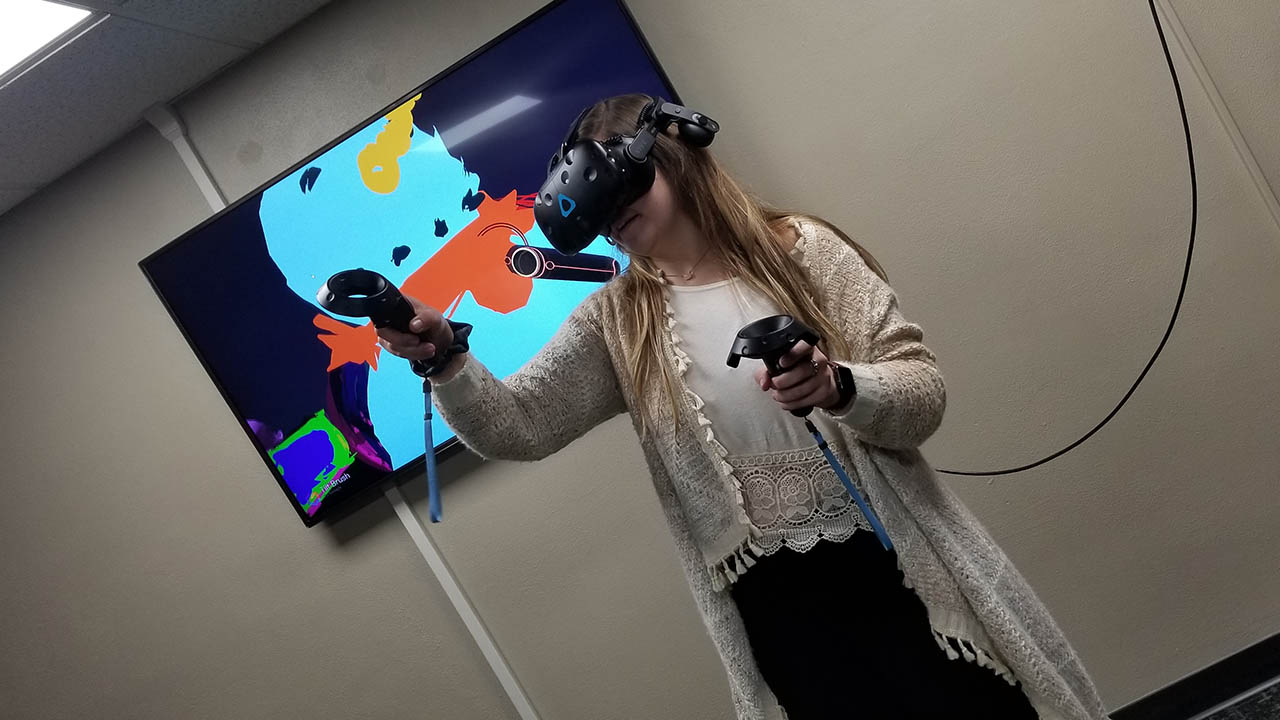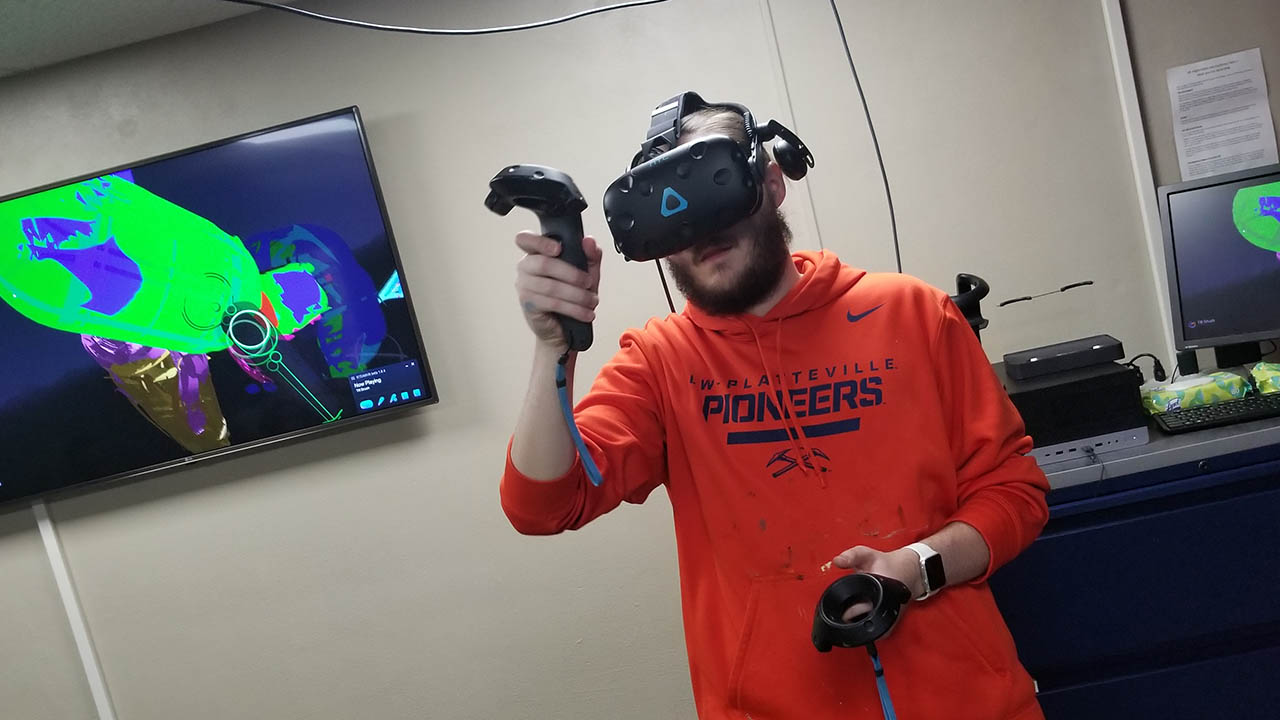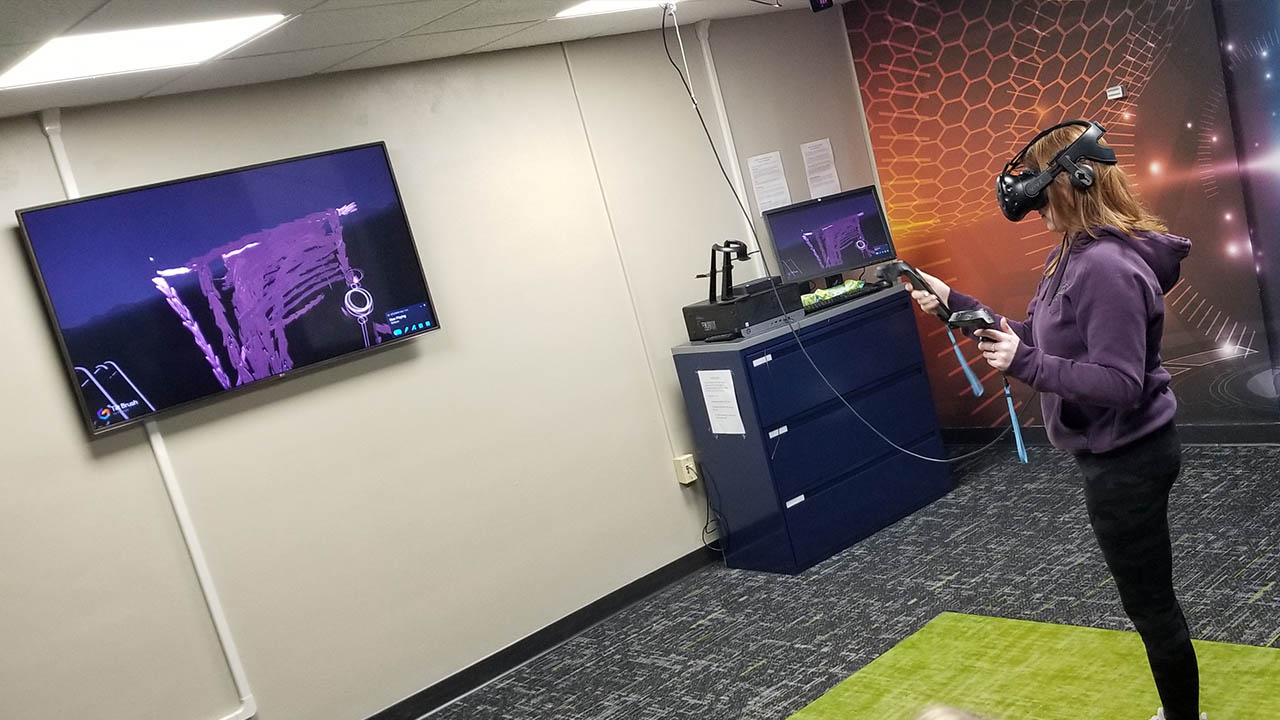


Eight University of Wisconsin-Platteville students recently had an opportunity to draw and paint in three-dimensional space using the Vive Virtual Reality System and Google Tilt Brush software in the university’s Virtual Reality Room, located in Karrmann Library.
The software allowed students to explore a virtual palette, experiment with an intuitive interface and use poly integration to upload their creations to the web and explore art from new perspectives.
Students are enrolled in the Survey of Studio Art Practices course, taught by Richard Moninski, distinguished lecturer of art at UW-Platteville, who led the hands-on, virtual learning opportunity.
“Today’s visual artists increasingly work across multiple media and processes,” said Moninski. “It is important for students to be exposed to new and emerging technologies to give them more options to realize their artistic goals.”
Students who participated in the virtual artistry experience included Julia Zahrndt, Leslie Heisz, Luke Beahan, Jessie Schoessow, Chase Cleasby, Megan Graney, Anna Stocks-Hess and Jerod McAfee.
Moninski noted that the Survey of Studio Art Practices course emphasizes diverse art processes and media, both two-dimensional and three-dimensional.
“Working with the Tilt Brush application was a fun way to think about drawing problems beyond the two-dimensional surface of traditional paper, moving them into the three-dimensional realm,” he said. “I was impressed with how quickly the students adapted to navigating the application. I’m hoping that this experience will spur their creativity in new and previously unanticipated ways.”
“It was a very unique experience,” said Zahrndt, a junior graphic design major from Kaltenkirchen, Germany, who used the Tilt Brush to paint a three-dimensional snowman. “Not only can you paint from the outer surface, but you can go inside the object and paint. The technology allows you to feel as though you are creating an actual three-dimensional object. The longer I used the Tilt Brush, the more comfortable I became and the easier it became. The most challenging part was getting used to the feeling of working in a three-dimensional space; that requires your entire body.
Zahrndt said the hands-on learning experience helped prepare her for her future career in packaging design. “I can see using this technology in the future to assist me in designing packaging so that I can observe it from the interior as well as the exterior,” she said. “I recommend bringing more awareness of this technology to students so that others have an opportunity to experience it firsthand.”
Tyler Tollefson, a technologist in Information Technology Services at UW-Platteville, who helped install the technology in the Virtual Reality Room, was available to answer students’ questions about the technology and about Google Tilt Brush. He provided a brief tutorial, then students took the headset and controllers and went to work.
“Utilizing Google Tilt Brush provides a fully immersive environment to create digital art in a three-dimensional space,” said Tollefson. “Also, by creating art digitally, you don’t run the risk of running out of ink, paint, paper, etc. – and you can hit ‘undo’ if you make a mistake. Virtual reality can be tricky to get used to for many people because it’s so immersive. It was impressive to see how quickly the students learned the controls, became comfortable in the virtual environment and started creating art. For me, it’s always a treat to see innovative technologies put into practice by our students.”